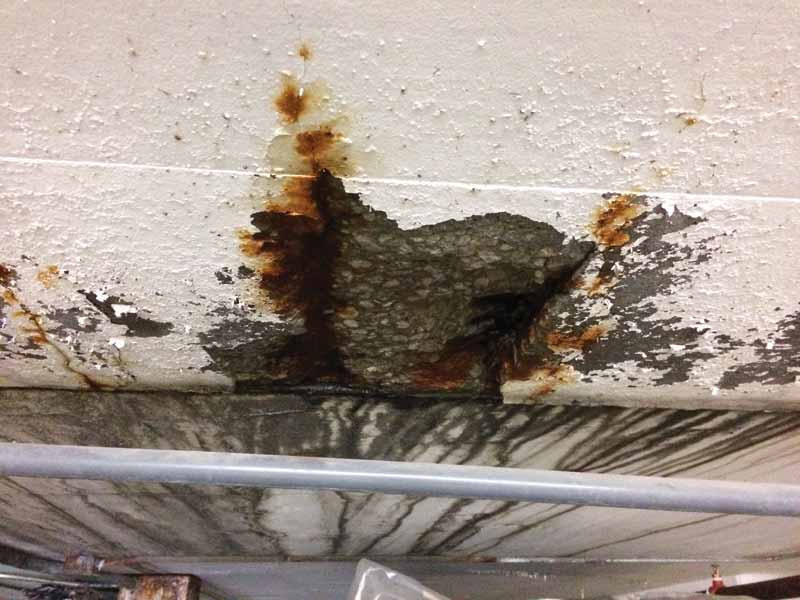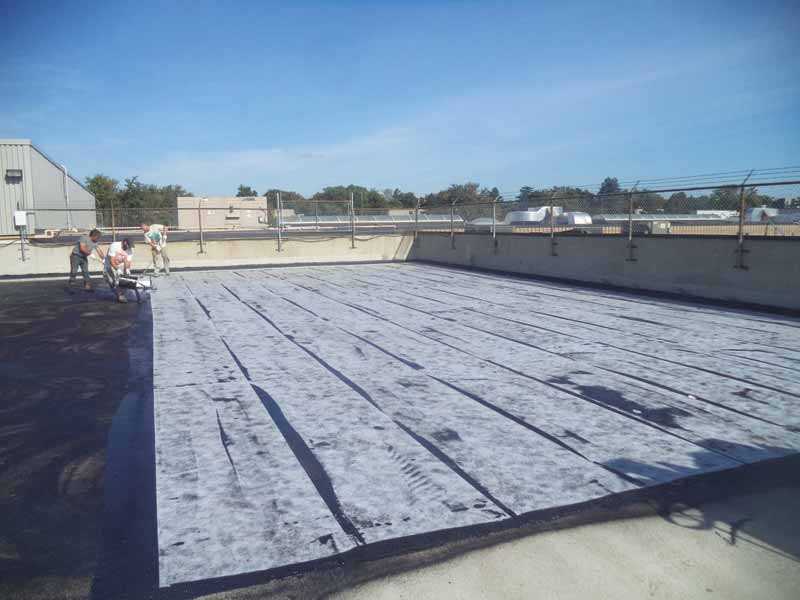Waterproofing for concrete parking structures: A comparison

Traffic-bearing waterproofing systems
Waterproofing systems are often multilayered to obtain the benefit of distinct physical properties. Systems must be flexible, soft, and elastic to accommodate movement of the structure as a result of thermal and loading changes. At the same time, they must also be hard, strong, and durable to deal with vehicle wear and tear, snowplows, and environmental factors. These are seemingly competing properties and it may be hard to picture them working together as part of a seamless waterproofing system. To achieve both requirements, the properties are integrated at different locations: at the surface of the structure as a waterproofing membrane layer, and above this as a wearing surface.
Membranes
A typical waterproofing system consists of a flexible, fully waterproof barrier membrane located at the surface of the concrete slab. The membrane must be flexible and elastic to effectively prevent the ingress of moisture and chlorides into the structure and also withstand movement of the structure and cracks without tearing and cracking itself.
Wearcourse
The wearcourse is the component of a waterproofing system withstanding the abuse of the aggressive environment it is in. It is typically intended to protect the membrane from physical damage as a result of vehicular traffic. The wearing surface may be installed directly on, and bonded to, the membrane or may be physically separated from the membrane. The installation type depends on the system and design. While it may sound advantageous for the wearing surface to move with the structure and bridge cracks, it would then lack the other key characteristics required to handle vehicle loading (hard, durable, and impact- and slip-resistant).
Designing the system
Selecting the right waterproofing system is a challenge always unique to the structure, the owner’s needs, and environmental factors in the installation environment. Proper selection requires a thorough understanding of available products and their performance characteristics.
Waterproofing systems are broadly grouped into two categories—thin and thick. These groupings have various systems within them comprising different materials affecting their properties and performance in various environments.

Polyurethanes
These are the typical “thin systems” on the market, and their chemical makeup includes:
- primer: a polyurethane-based adhesive used to improve bond;
- membrane: a two-component, fast-curing, polyurethane basecoat designed with excellent elongation properties;
- wearcourse (interior): a two-component, fast-curing, aromatic polyurethane topcoat with high tensile strength and excellent tear and abrasion resistance; and
- wearcourse (exterior): a two-component, high-solids, aliphatic urethane waterproofing membrane.
These systems have urethane membranes and wearcourses fully bonded together as part of a single assembly. These systems are liquid applied with squeegees and rollers, have very high bond strengths to the concrete surface (>1.4 MPa [203 psi]), are comparatively thin (1.5 to 3 mm [60 to 120 mils]) and lightweight.
Hot-rubberized asphalt
Asphaltic waterproofing is typically considered a “thick system” as the finished assemblies can range from 20 to 150 mm (0.78 to 6 in.) or more in thickness. These systems consist of a rubberized asphalt waterproofing membrane overlaid with a wearing surface (e.g. mastic, asphalt, concrete, or interlocking pavers). The hot-rubberized asphalt waterproofing is liquid applied with squeegees and reinforced with fabric. There are distinct advantages and disadvantages to each type of wearing surface including varying performance levels, weights, and anticipated lifespans. For example, a concrete topping installed above a hot rubberized waterproofing system provides a durable and long-lasting surface, which will withstand impact and not be prone to wearing. These systems can also utilize both electric or glycol embedded snow melting systems, thereby reducing the need for de-icing salts, and can significantly improve the slip resistance of ramps and loading areas.


